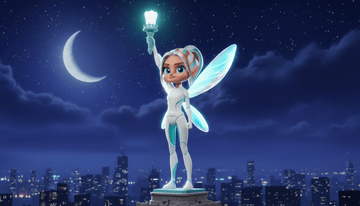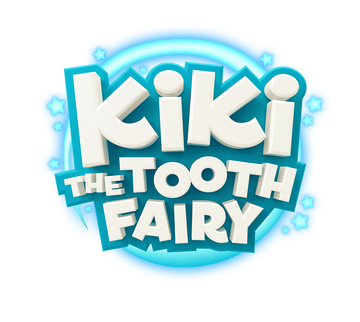When kids lose a tooth, most families in the English-speaking world tell the same story: put the tooth under your pillow and the Tooth Fairy will swap it for money.
But this isn’t universal. In France and Spain, it’s a little mouse. In Turkey and India, teeth are tossed onto rooftops. In some parts of the Middle East, teeth are buried or given to animals for strength.
So why does the Tooth Fairy dominate in the United States, the UK, Canada, and Australia? The answer is part folklore, part pop culture, and part marketing magic.
From Mouse to Tooth Fairy: The Origins
The idea of trading a tooth for a reward isn’t new. In France, La Petite Souris (“the little mouse”) has been collecting children’s teeth for centuries. Spain has El Ratoncito Pérez, first written into stories in the 1800s.
In these traditions, the mouse is small enough to sneak under pillows and leave a coin behind.
The fairy, however, is a newer invention. The first known reference to the Tooth Fairy in English appears around 1927 in a children’s play, and by the 1940s, the Fairy was a common character in American parenting advice.
📖 Smithsonian Magazine notes that the Tooth Fairy doesn’t have deep European roots. She’s a very modern creation.
Why Fairies Fit the English-Speaking Imagination
Fairy tales have long been part of English-speaking culture, but the 20th century supercharged their popularity.
-
The Disney Effect: Walt Disney’s Peter Pan (1953) made Tinker Bell an icon. Suddenly, fairies were glamorous, sparkly, and powerful. They were much superior to mice, which people saw as dirty and disease-ridden.
-
Children’s Literature: English-language children’s books leaned heavily on whimsical fairies and sprites. They represented magic and wonder, not rodents.
-
Cultural Branding: A Fairy felt aspirational, marketable, and aligned with the idea of childhood innocence.
It’s no surprise that parents in America and Britain chose the Fairy as their child’s nighttime visitor.
Why the Tooth Mouse Didn’t Catch On
So why did the mouse remain popular in France and Spain but not in the UK or the US?
-
Mice as Pests: In Anglo-American culture, mice were tied to poverty, filth, and disease . Definitely not something parents wanted to glamorize.
-
Fairies as Icons: The mid-1900s saw a boom in fairies in movies, cartoons, and toys. The mouse couldn’t compete with a winged, sparkling figure.
-
Marketing Potential: A fairy could appear in books, cartoons, and commercials.
As historian Rosemary Wells put it in her research on the Tooth Fairy, the character gained traction precisely because she was flexible, whimsical, and modern.
The Postwar Boom: Why the Tooth Fairy Took Off
After World War II, American consumer culture exploded. Parents wanted ways to celebrate milestones with their kids. The Tooth Fairy fit perfectly:
-
She turned a scary event (losing a tooth) into a positive ritual.
-
She worked with small gifts. A coin or dollar under a pillow felt magical without being expensive.
-
She tied into consumer products. Books, dolls, later cartoons, and even dental brand campaigns featured the Fairy.
By the 1970s, surveys showed that over 80% of American households used the Tooth Fairy as their tradition (Delta Dental Tooth Fairy Poll).
The mouse never stood a chance.
The Modern Tooth Fairy: Stronger Than Ever
Today, the Fairy is more popular than ever in English-speaking countries. But she hasn’t stayed the same. She’s evolved with technology.
-
Letters and Gifts: Parents began leaving handwritten notes alongside coins. Here are some great letter ideas and gift ideas if you’re looking to add some magic to the tradition.
-
Digital Magic: Now parents can create personalized letters instantly with tools like the Kiki Tooth Fairy Letter Generator. Each note comes with fairy-style handwriting and even adventure pictures of Kiki’s wild nights — from bubblegum mishaps to midnight races with birds.
-
Video Messages: Families go even further with personalized Kiki Tooth Fairy videos. Children don’t just read a letter, they see the Tooth Fairy on screen, calling them by name and congratulating them directly.
The Fairy has become more than folklore. She’s an interactive tradition that adapts to every generation.
Why the Tooth Fairy Won
The Tooth Fairy didn’t simply replace the mouse. She succeeded because she was:
-
Culturally appealing. Sparkles beat squeaks in the English-speaking imagination.
-
Commercially scalable. From books to videos, the Fairy fit every medium.
-
Emotionally flexible. She could be silly, magical, caring, or even forgetful with funny excuses.
In other words, she wasn’t just a character… She was a brand before branding was mainstream.
And with digital tools like personalized letters and videos, the Tooth Fairy continues to thrive, shaping childhood memories long after the coins are spent.
Final Thought
Whether it’s a mouse, a fairy, or a rooftop tradition, every culture finds a way to mark the moment when baby teeth fall out.
But in English-speaking countries, the Tooth Fairy reigns supreme. From her birth in the 1920s to her dominance today, she has proven adaptable, lovable, and impossible to replace.
And now, with personalized letters and videos from Kiki the Tooth Fairy, the tradition has entered a new chapter… One where the magic isn’t just under the pillow, it’s in your inbox and scrapbook too.






